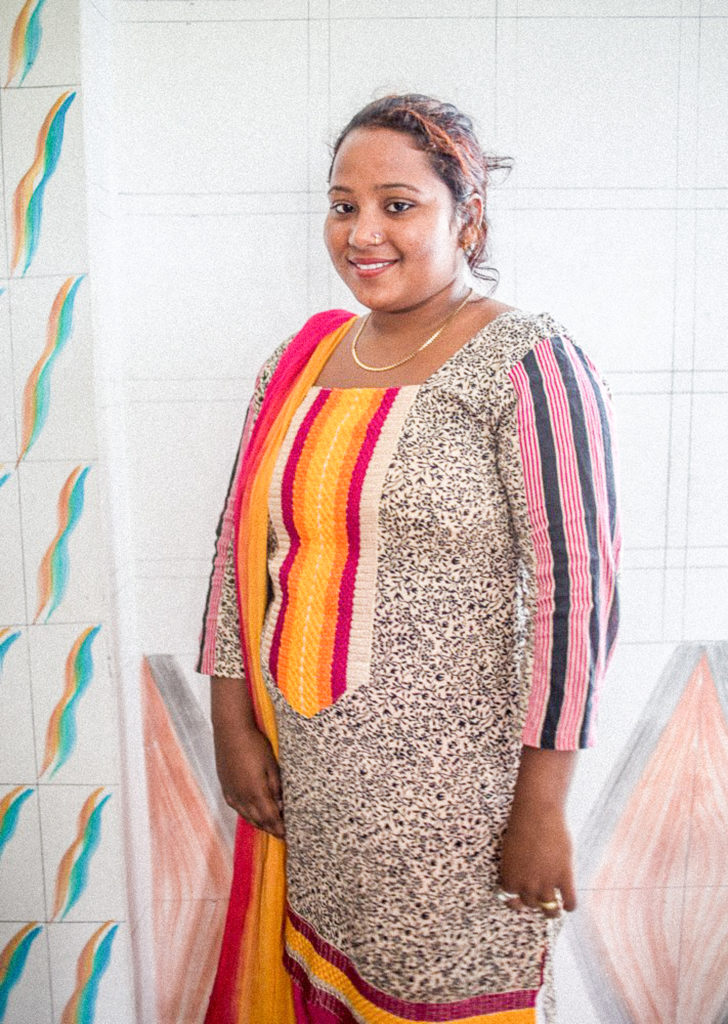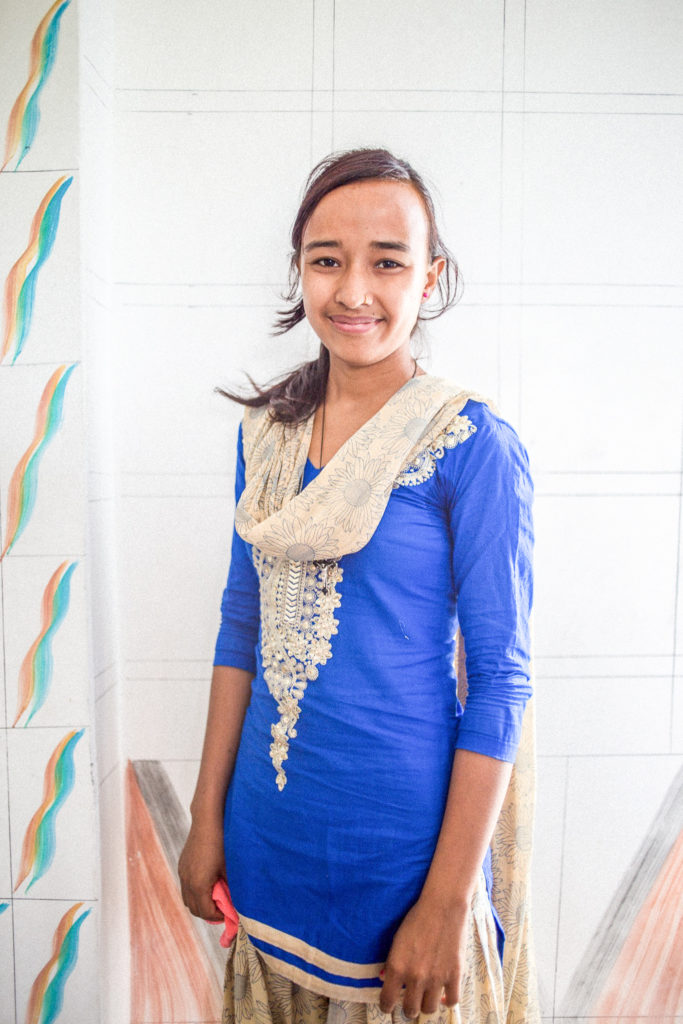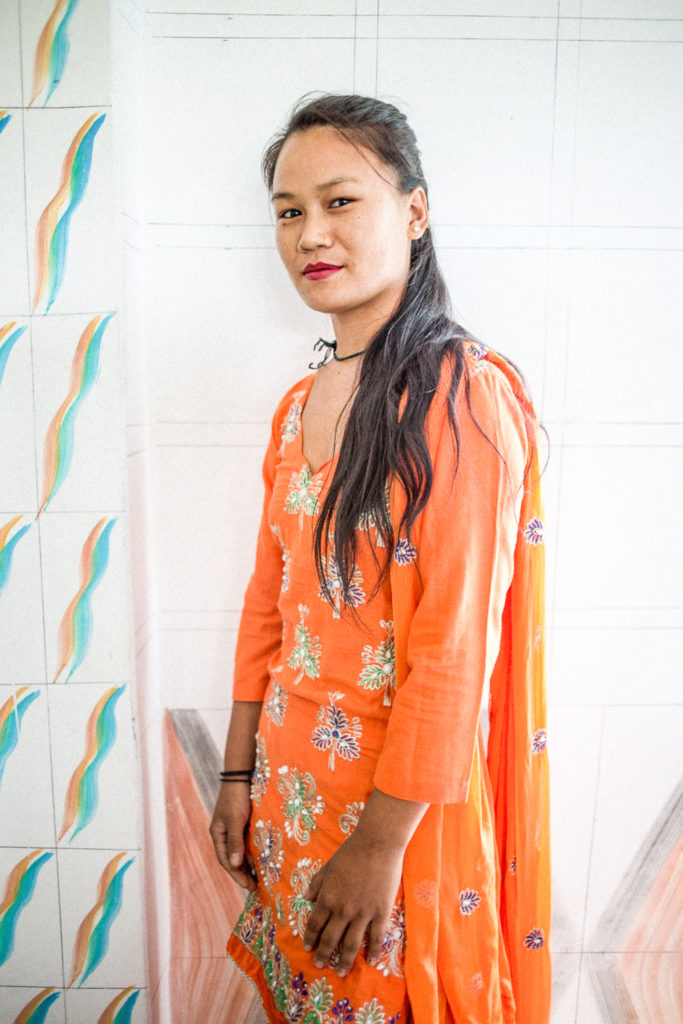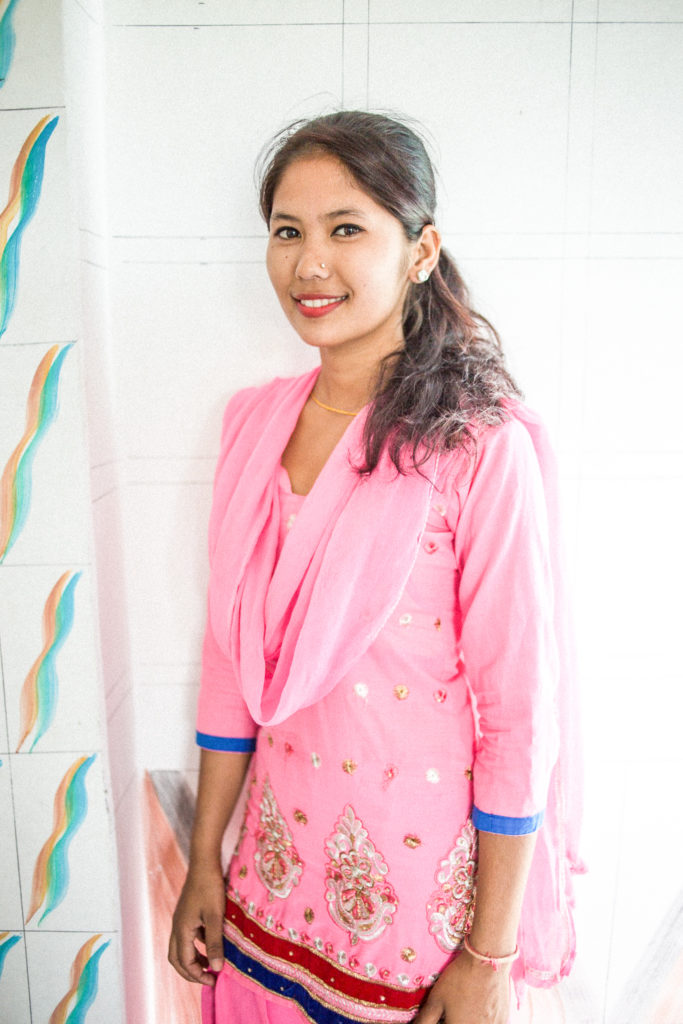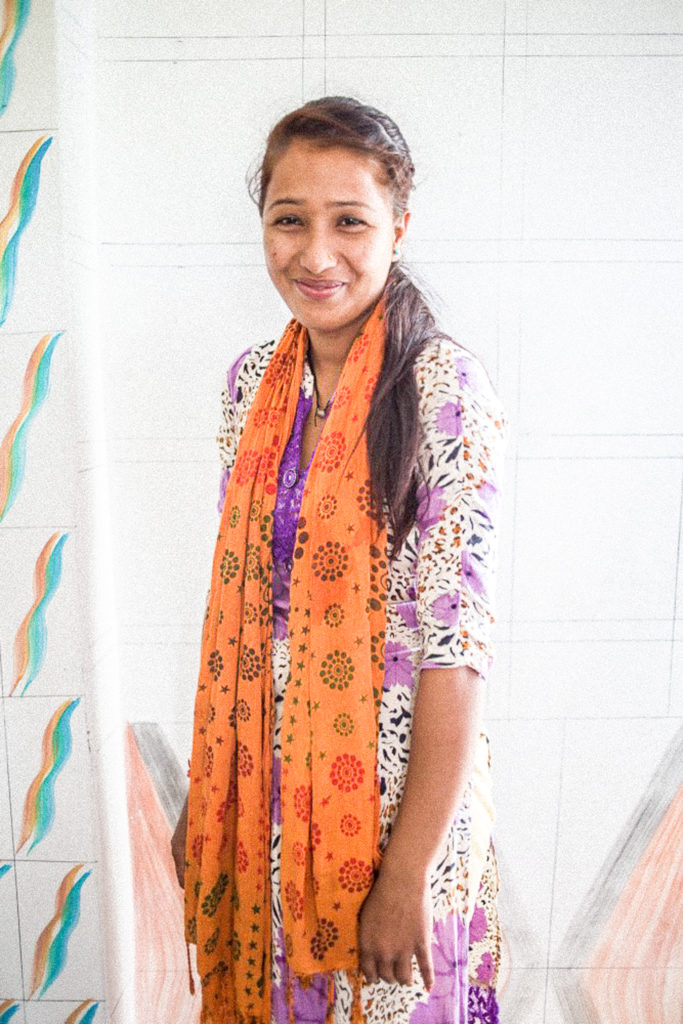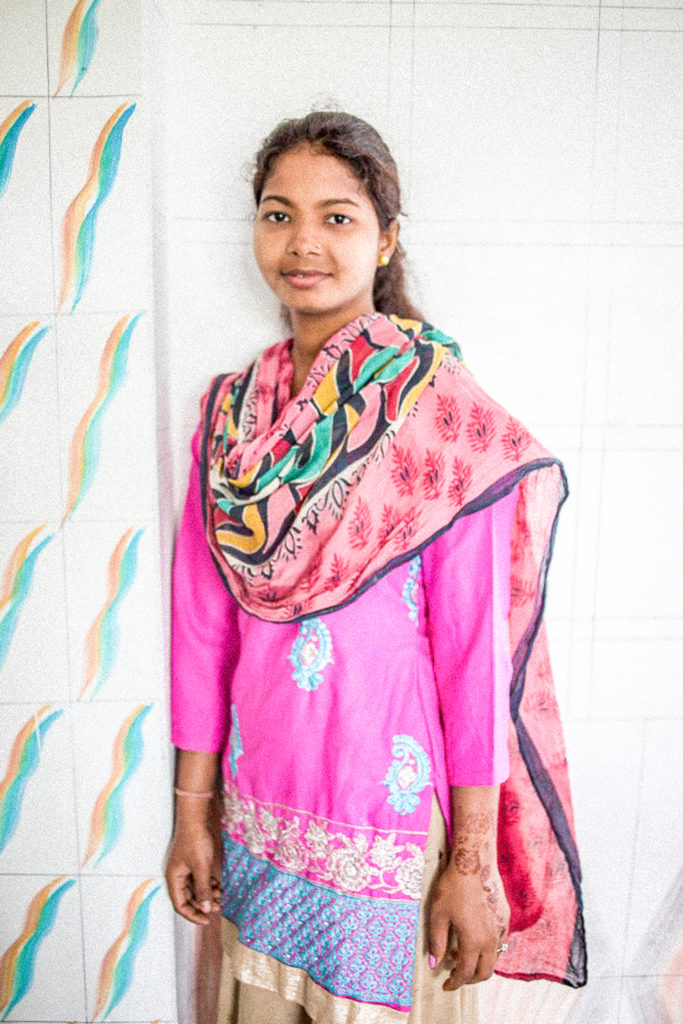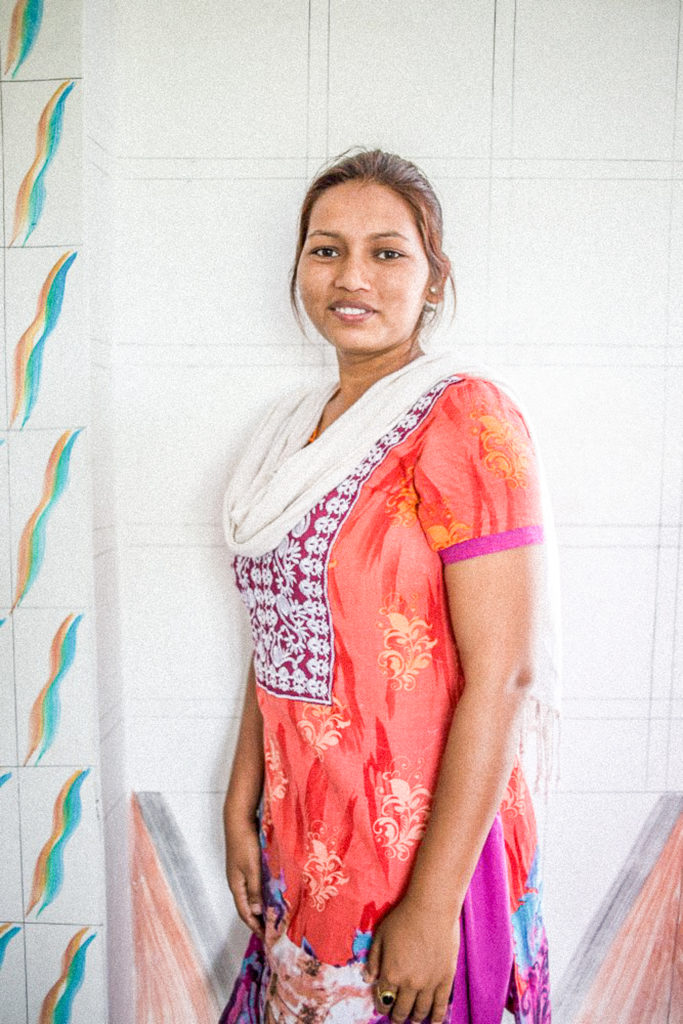Youth Menstrual Traditions – Nepal
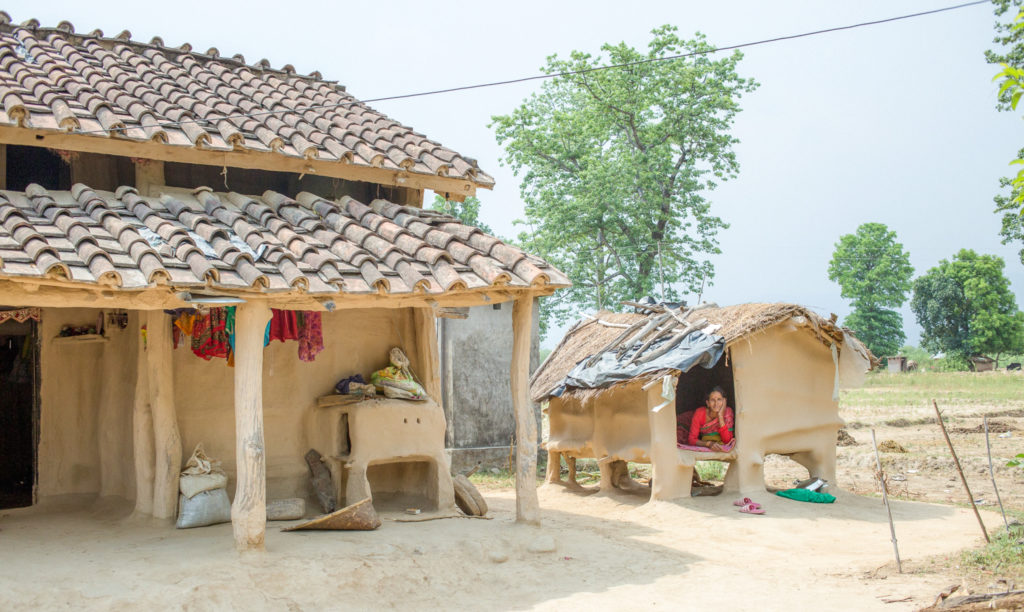
Overview
Throughout Nepal, women and girls follow a range of menstrual practices, many of which leave them vulnerable to negative health outcomes. In this study, we applied Collaborative Filmmaking to acquire a nuanced, sensory understanding of menstrual practices and motivations and to better understand complexities across different castes/ethnicities and religions in Kanchanpur district in southern far-west Nepal. Results show an array of menstrual practices related to cleansing, cooking, touching, worshipping, and sleeping. Participants’ menstrual practices varied by caste/ethnic and religious background and were motivated by religious and spiritual beliefs, family tradition, negative consequences, and social pressure. This audio-visual gallery highlights experiences of menstruation that adolescent girls undergo each month. The full scientific manuscript is published in the journal, Women’s Reproductive Health. Note: Pseudonyms have been used.
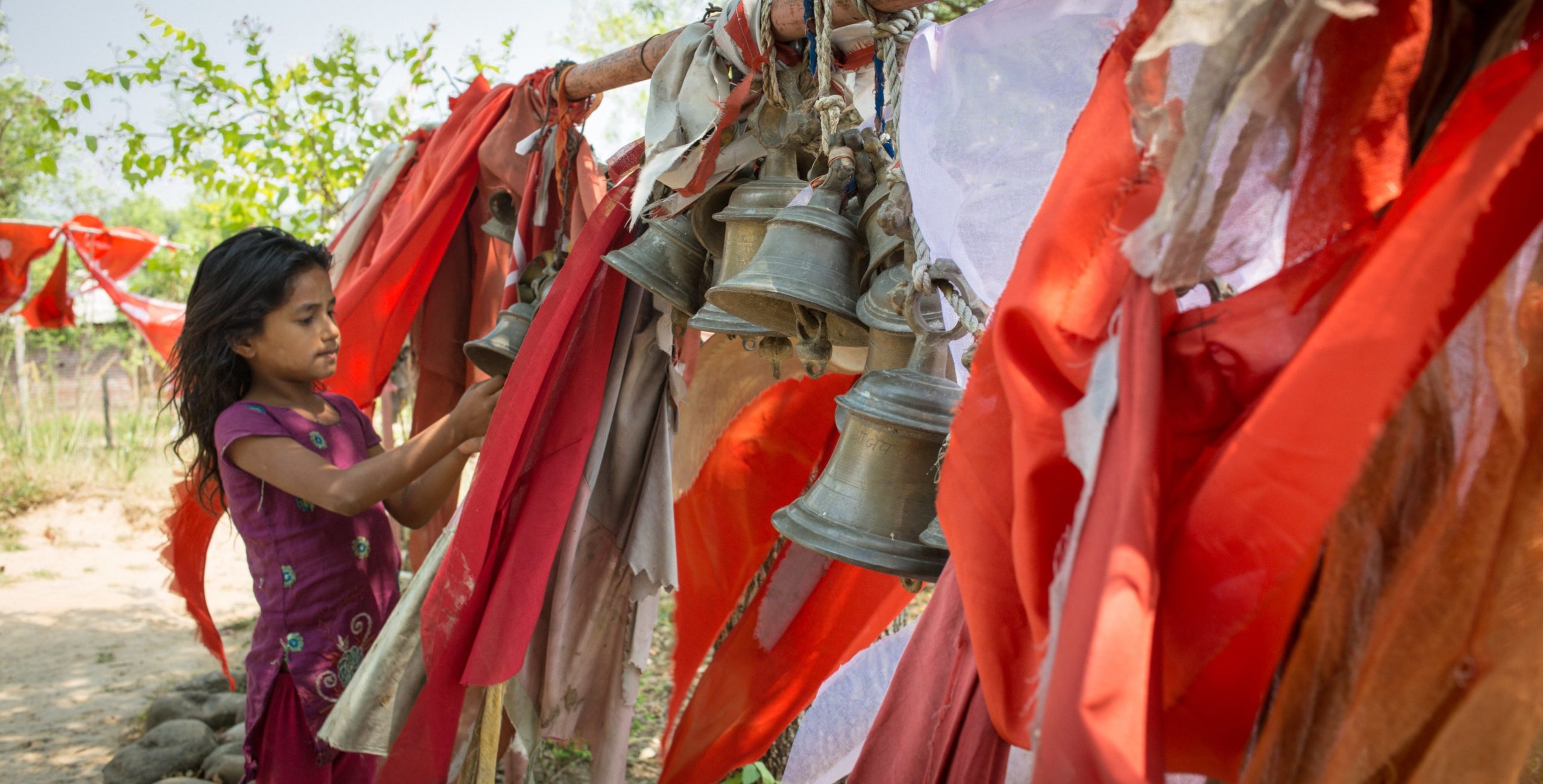
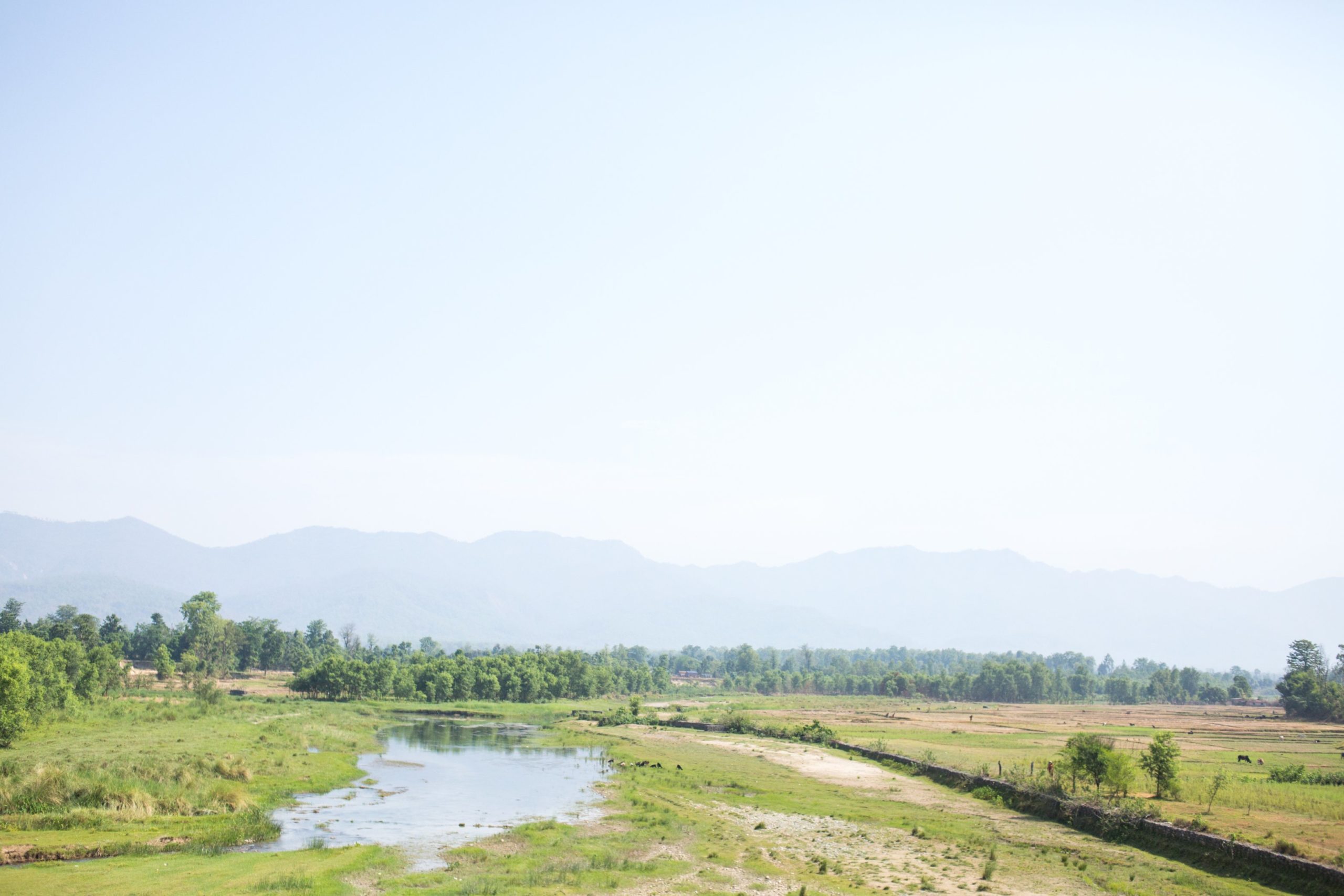
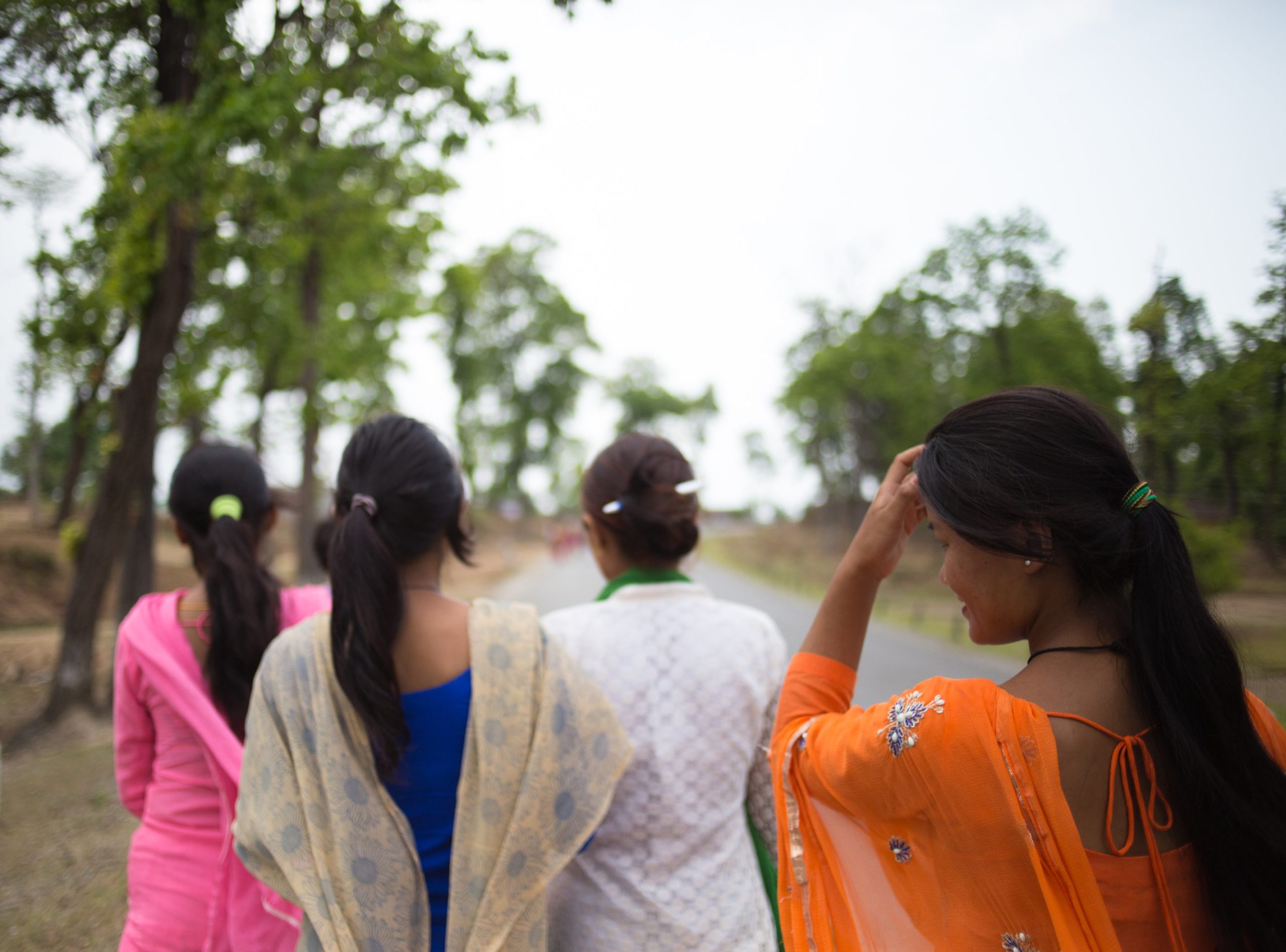
Summary of Key Menstrual Practices
Detailed Menstrual Practices
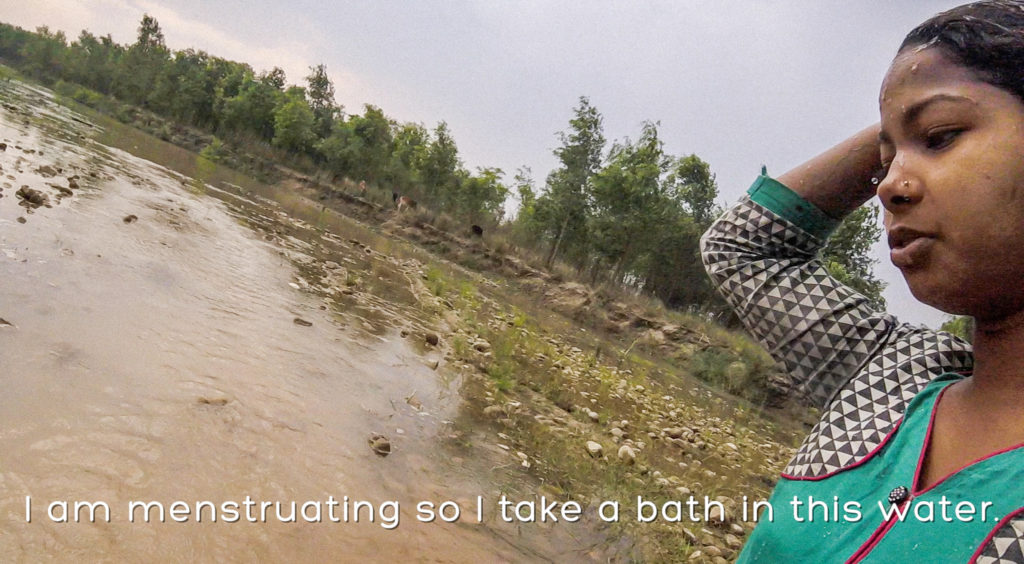
Bathing Practices
All of the Hindu participants reported altering their bathing practices during menstruation, but the degrees to which they did so varied by caste/ethnicity. For example, the Hindu Dalit girls followed the strictest bathing practices during their menstrual period.
“[Menstruation] affects my life because when I menstruate, I go to the river to bathe, which is far away” (Maya, Hindu Dalit, age 18).
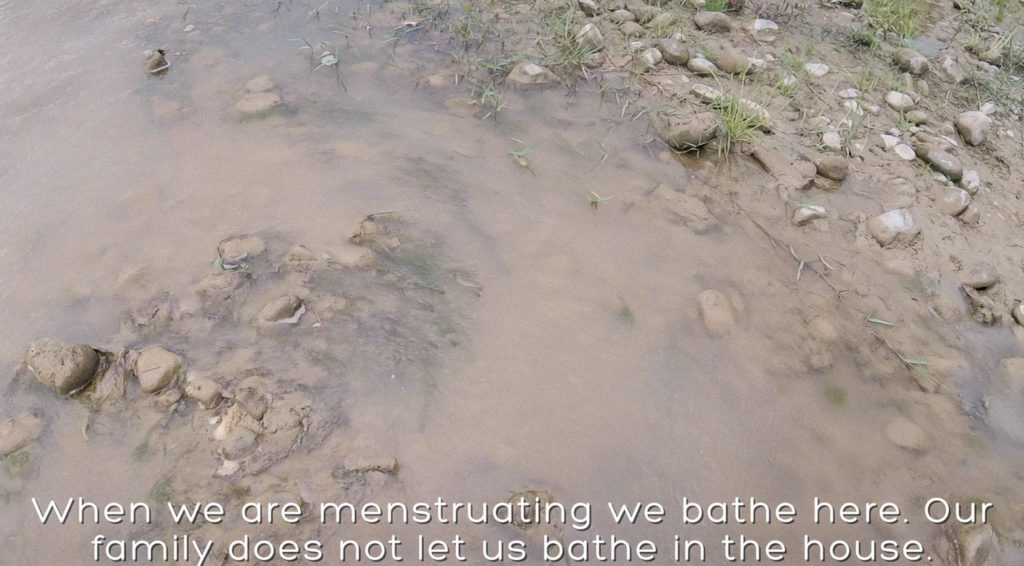
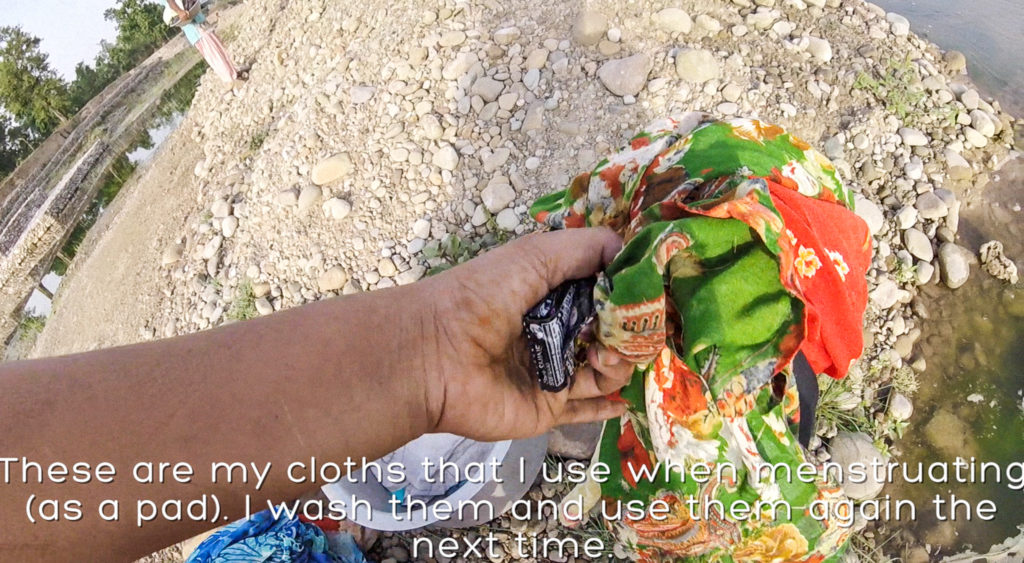
The other three Hindu participants were allowed to bathe on their property but were required to keep a distance from the main water tap, and thus had to request water from a family member or friend.
In contrast, the Christian girls regardless of caste/ethnic background, did not change their bathing practices and were able to use the water on their property while menstruating.
Laundry
Laundry was another cleansing-related practice that changed during menstruation for some participants. Following the most extreme practices, the Hindu Dalit girls washed their clothing and bedding in the river and hung their clothes to dry along the roadside during menstruation, as they were not allowed to go near their homes. When the Hindu Dalit girls were not menstruating, they washed and dried their laundry at home.
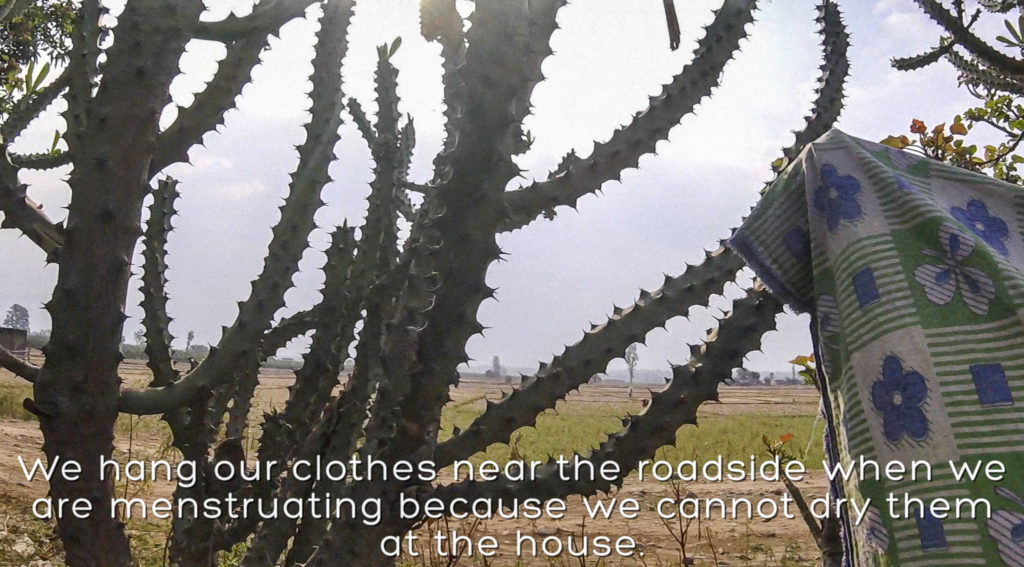
The three other Hindu participants washed and dried their laundry at home during menstruation; however, they had to ask for water from others. The two Christian girls washed and dried their clothes at home as usual without restrictions.
Cleaning Physical Spaces
For the Hindu Dalit girls who slept in a small shed (chhau goth) while menstruating, cleansing of the shed was also a key menstrual practice displayed and discussed in the films. The participants showed the process of cleansing the shed on the fourth day of their period using mud from the river mixed with bullock dung, which is believed to ward off snakes and insects and remove impurities.
The two Christian girls also filmed actions of cleansing physical spaces, as they both showed themselves cleaning their homes during menstruation. However, they had different opinions about the work. One stated that she did not have any issues with doing her household work during her menstrual period. The other expressed,
“When we are menstruating, we do all the housework. I feel bad because we do not get any time to rest” (Asha, Christian Dalit, age 18).
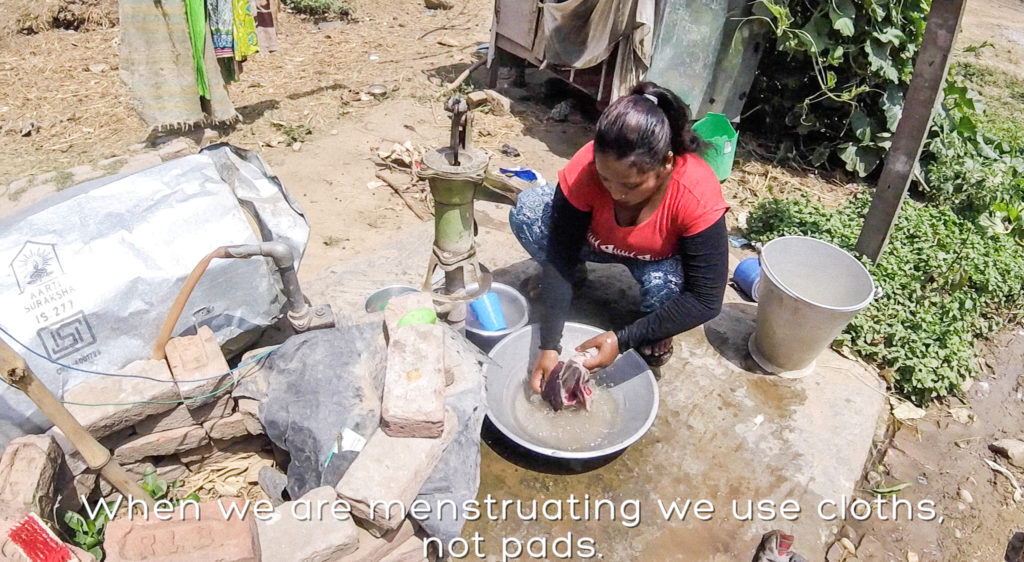
Ritual Cleansing
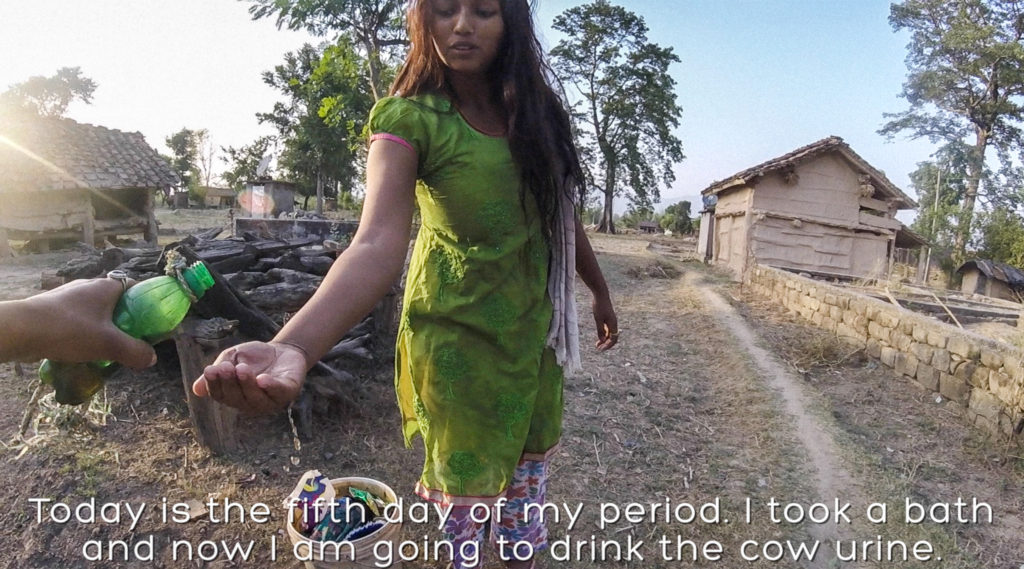
All of the Hindu girls practiced ritual cleansing by sprinkling and sipping cow urine to make themselves pure after their period.
“Our family members tell us that cows are a god and we should worship them. [Therefore] we will not be pure unless we drink their urine [at the end our period]” (Maya, Hindu Dalit, age 18).
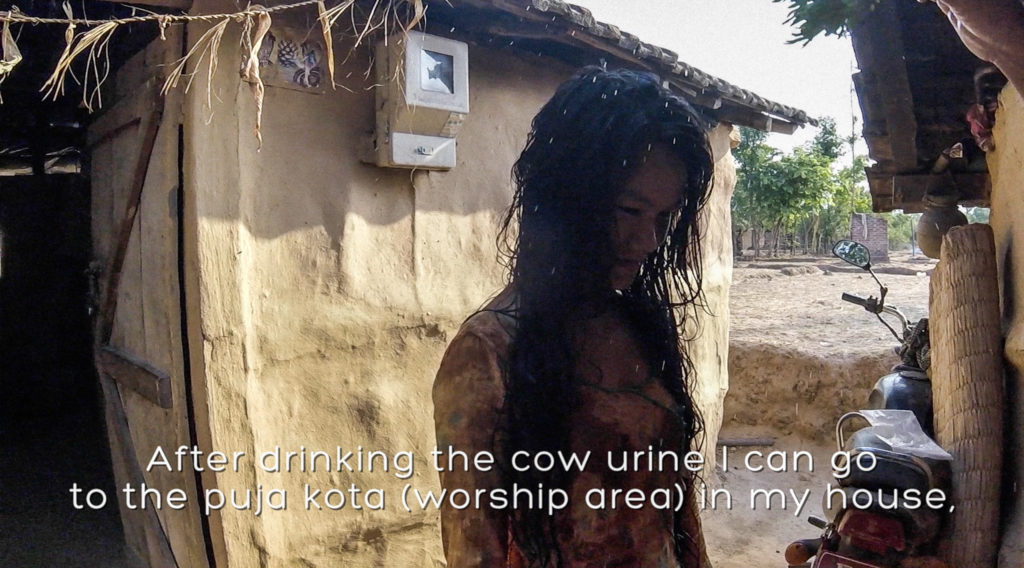
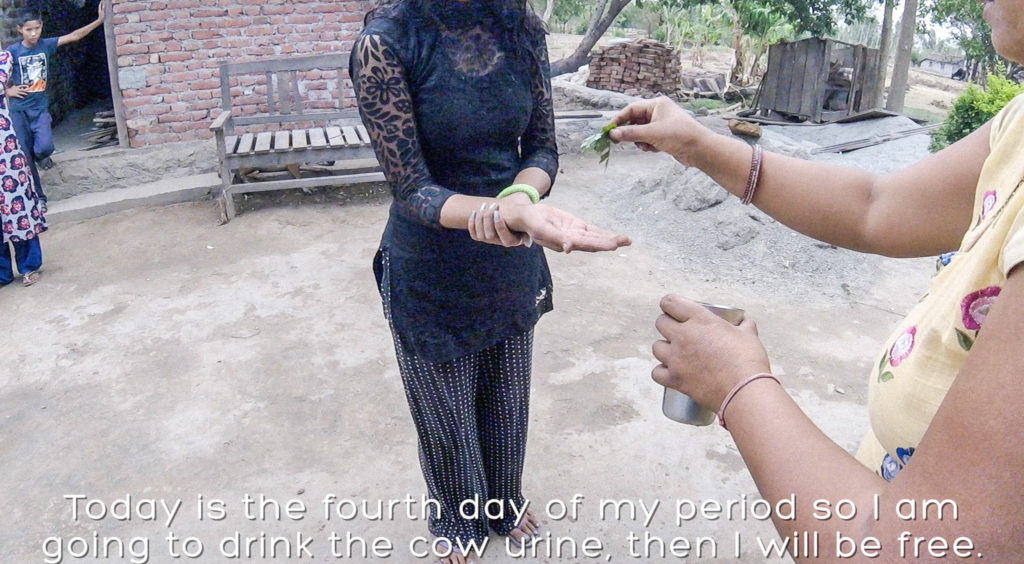
Cooking
Though none of the Hindu girls were allowed to enter the kitchen or cook while menstruating, there are some subtle differences in this practice between participants from different caste/ethnic backgrounds. In contrast, both Christian girls were allowed and encouraged to cook during their period.
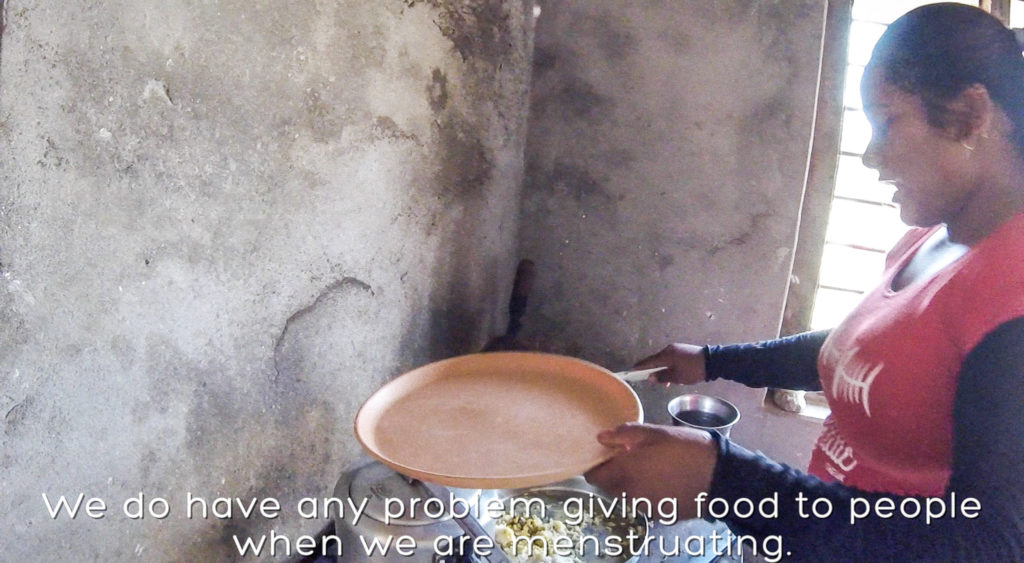
Among Hindus, the Dalit, Chhetri, and Brahman participants had the strictest cooking and kitchen use restrictions, as they were not allowed to go near the kitchen, enter the kitchen, or cook. During that time, family members, typically mothers and sisters, prepare food for them and serve it to them in a separate area.
“For 5 days I don’t cook. I think of it as a vacation” (Maya, Hindu Dalit, age 18).
One Christian girl explained that, in her opinion, although it may seem like her Hindu friends are getting a break during menstruation, they still have many responsibilities:
“They only avoid the kitchen, but they [still] go to the forest and bring wood, and they work in the fields” (Mala, Christian Chhetri, age 18).
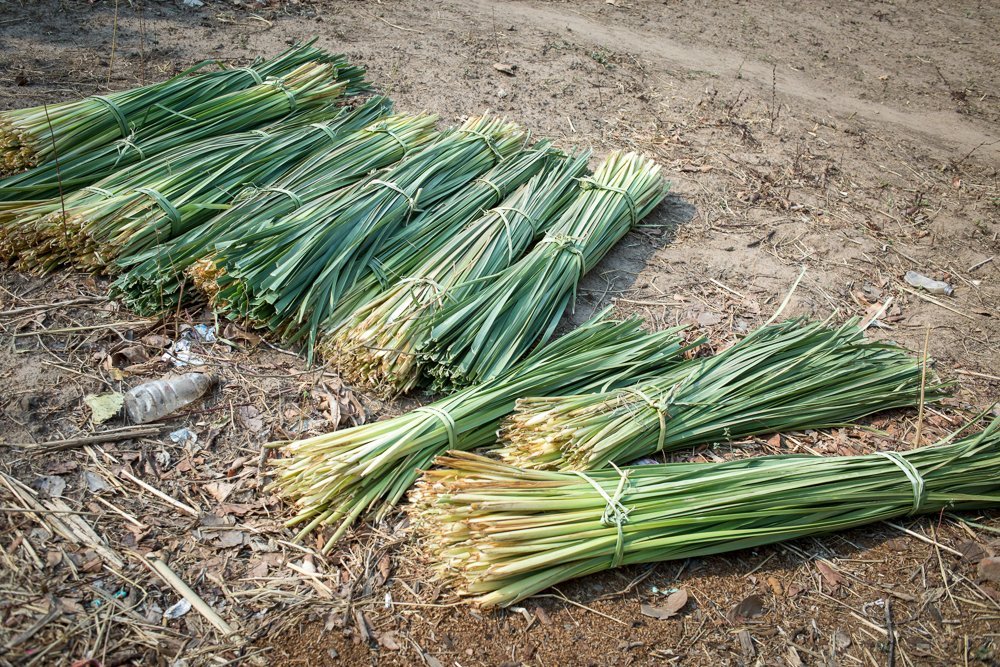
Touching
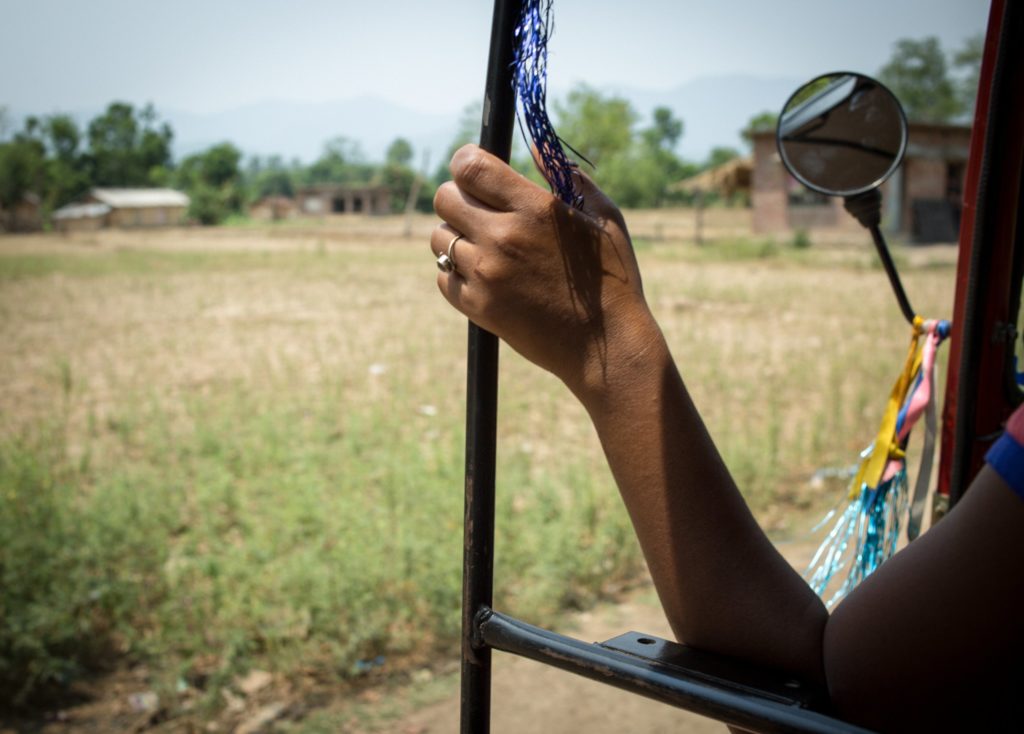
Most Hindu participants discussed restrictions regarding touching people, plants, animals, and related items during menstruation; the Brahman, Chhetri, and Dalit girls following the strictest practices. The Christian girls had no touching restrictions during menstruation.
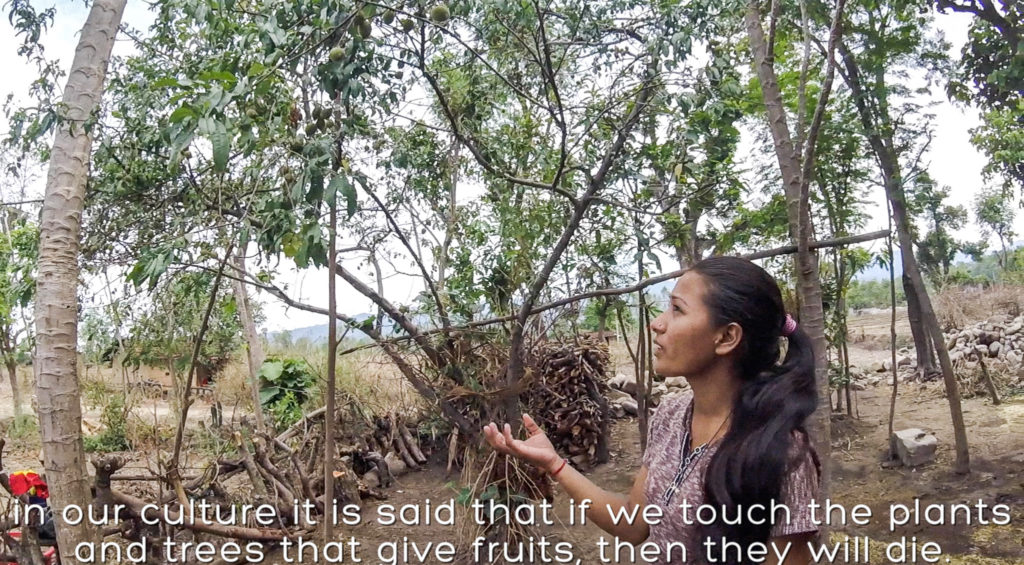
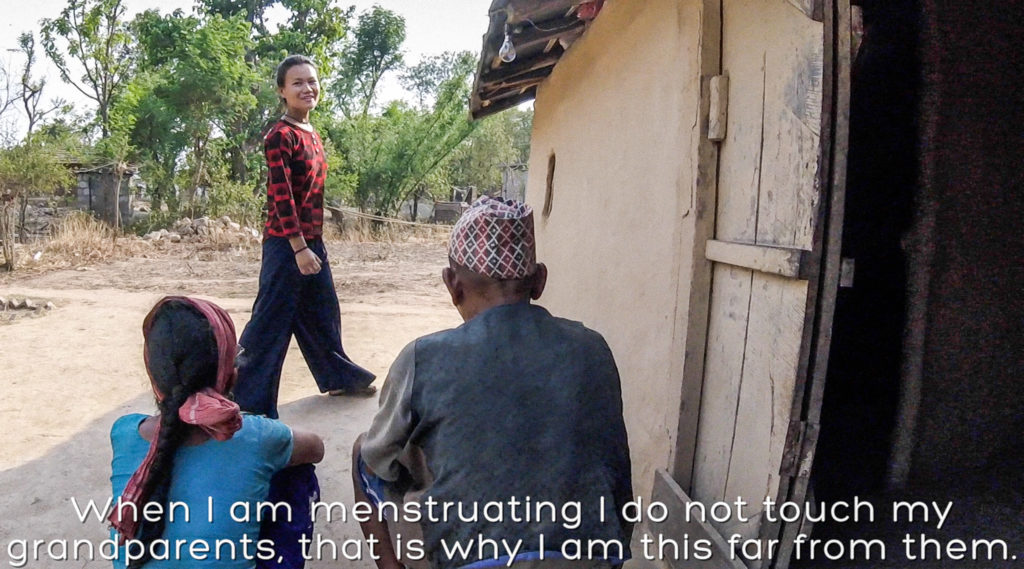
It was common to avoid touching family and friends, though the specific rules varied. All of the Hindu girls avoided touching family and friends to some degree.
The Hindu Janajati girl had fewer restrictions when it came to touching others; she was not allowed to touch her father and grandparents. Unlike her Hindu Dalit, Chhetri, and Brahman friends, she discussed and showed herself touching friends and said:
“When I am menstruating, I can engage with my friends and roam around with them” (Onsari, Hindu Janajati, age 17).
Menstrual restrictions related to touching plants is an important practice woven throughout the films and discussions. Most of the Hindu girls (Brahmin, Chhetri, and Dalit) explained they were not allowed to touch plants while menstruating:
“When I am menstruating, I do not touch plants. In our culture it is said that if we touch plants and trees that bear fruit, they will die. The fruit will become rotten, the leaves will fall, and the plants will become dehydrated” (Srijana, Hindu Brahman, age 18).
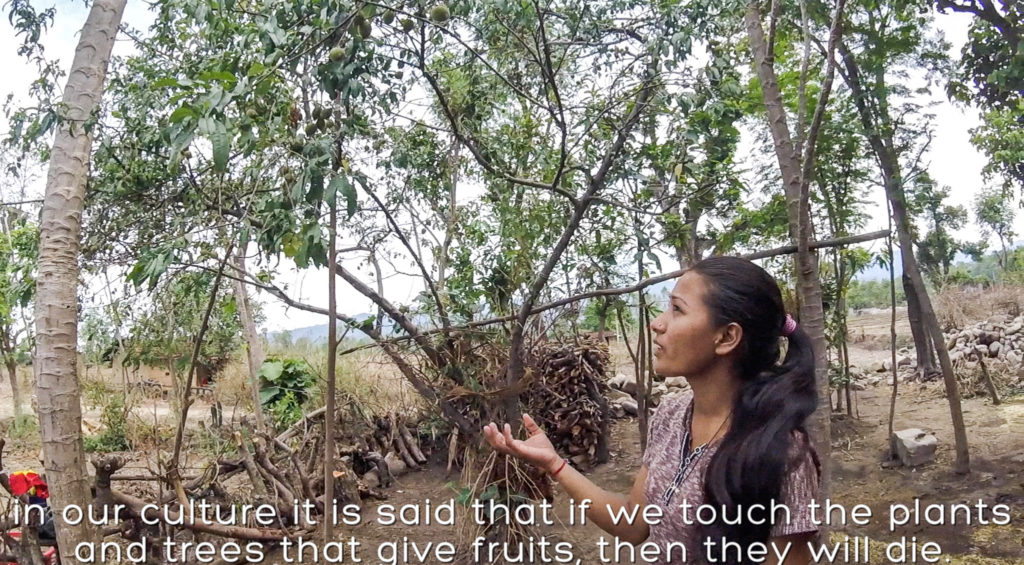
Of all the Hindus, only the Janajati girl was allowed to touch plants while menstruating. She said she was relieved that her practices are more relaxed than others. Although her practices are less restrictive, she explained the pressure to practice certain menstrual restrictions:
“When I am alone, I don’t feel anything. But outside people say, ‘they don’t follow the practice, they touch the plants and all.’ [So] in front of them we have to pretend like we are also practicing” (Onsari, Hindu Janajati, age 17).
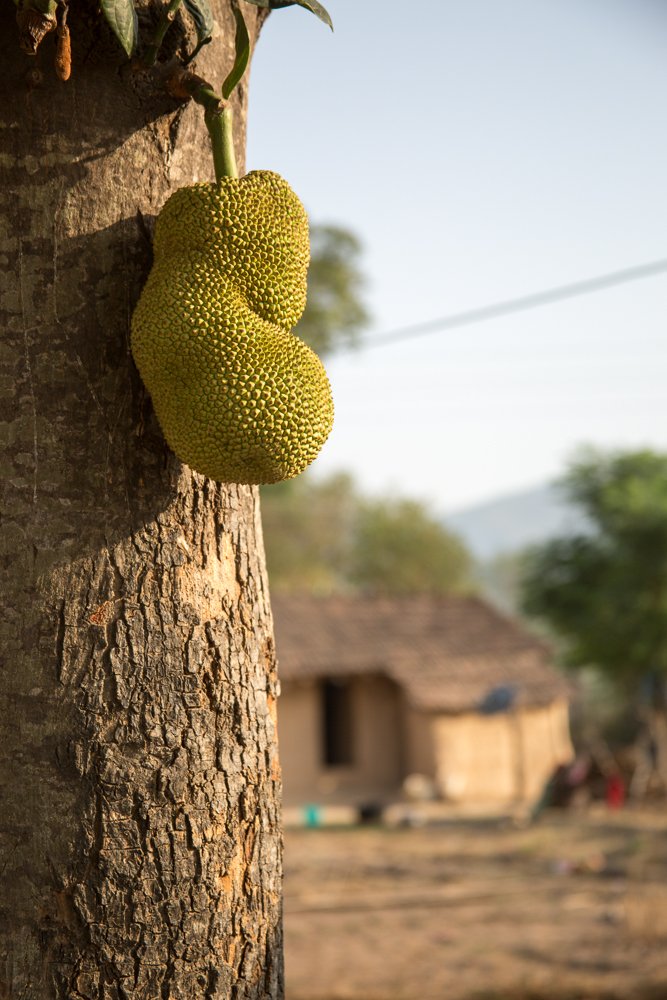

Both of the Christian girls openly touched plants while menstruating.
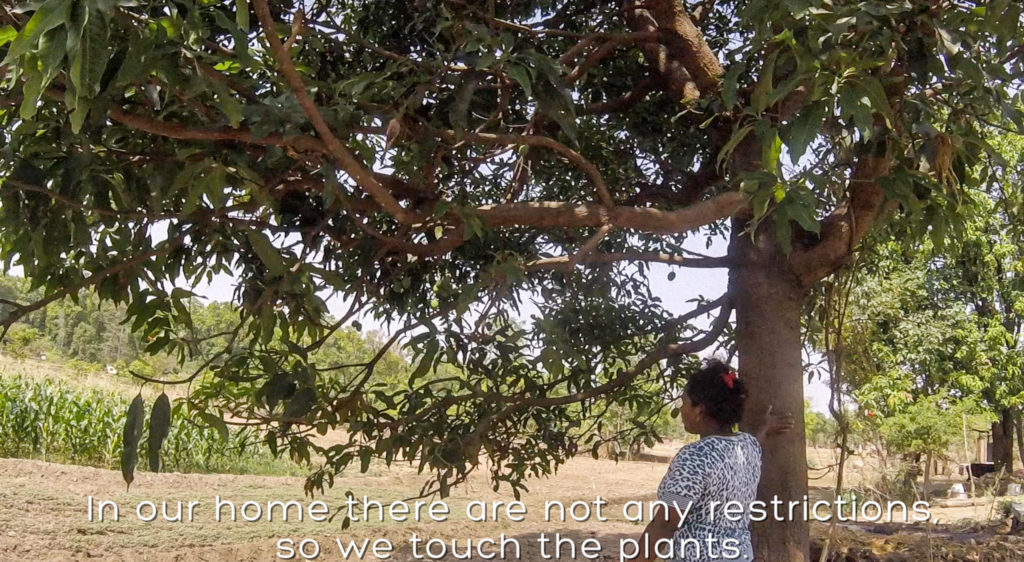
Worshipping
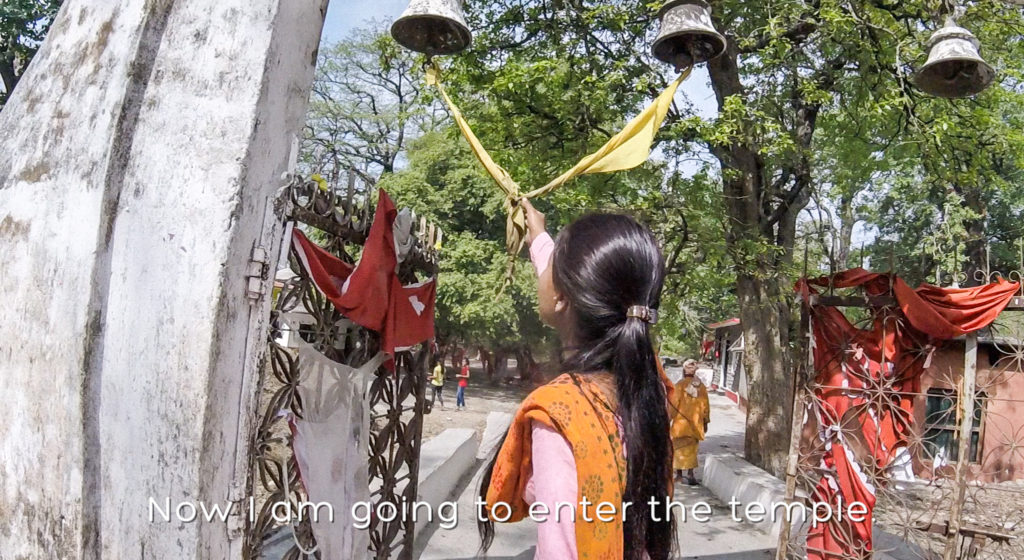
All Hindu girls had worship restrictions to some degree during their period, whereas the Christian girls attended church as usual during menstruation. Worship practices occurred at a variety of places including home prayer rooms, religious community spaces (i.e., temples and a church), and areas near places of worship.
Inside their homes, all Hindu girls had a prayer room, though their restrictions during menstruation subtly varied. Most of the Hindu girls (Brahman, Chhetri, and Dalit) were not allowed to enter their homes, hence they could not perform religious worship activities:
“Today I am menstruating so I cannot go inside and worship. I cannot go inside because there is the kitchen and prayer room. God does not allow us to worship when we are menstruating so I cannot go inside. In our culture if we go inside it will be a sin” (Sunita, Hindu Chhetri, age 18).
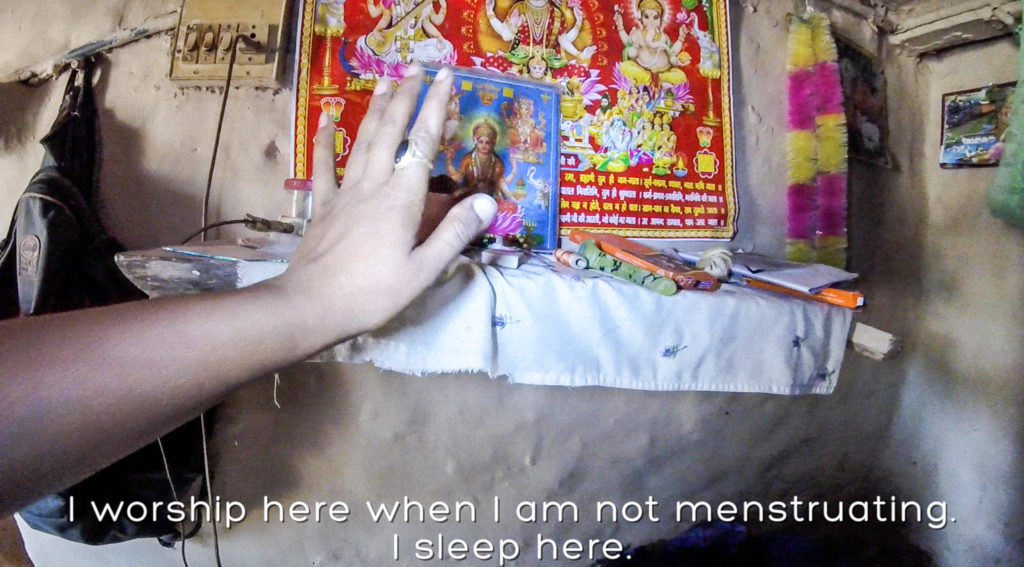
For all Hindu girls, avoiding community temples and shrines was vital. In addition, two Hindu girls (Brahman and Dalit) explained that, not only are temples to be avoided, but so are other holy places, such as the physical spaces surrounding temples.
By contrast, the two Christian girls were not only allowed to enter places of worship while menstruating, but they were expected by other Christians to do so. However, the participants explained that this can sometimes be challenging:
“We do not have restrictions, so we go inside the church when we are menstruating. We feel awkward but we have to come. [Non-Christians] in the community ask us, ‘Why are you roaming here and there while menstruating?’ We feel afraid because people talk about us if we are menstruating and going to church. But what can we do? We have to come” (Asha, Christian Dalit, age 18).
This finding illustrates that Christian girls may internalize the Hindu notion of pollution despite following Christian beliefs, or as members of a religious minority, they may experience social pressure to conform to the majority’s norms.
Sleeping Practices
Sleeping practices during menstruation varied among the participants. All the Hindu participants altered their sleeping habits during menstruation in a range of ways, whereas the Christian participants did not change their sleeping habits during menstruation.
The most extreme practices were followed by the two Hindu Dalit girls, who slept in a small shed (chhau goth) near a neighbor’s home while menstruating. One Hindu Dalit girl explained that sometimes many people crowd into the shed:
“At times, 10-12 people sleep here when menstruating. When we are menstruating, we sit here, and all of us will go to the river to bathe. When we are not menstruating, we sleep in our houses” (Kinjal, Hindu Dalit, age 16).

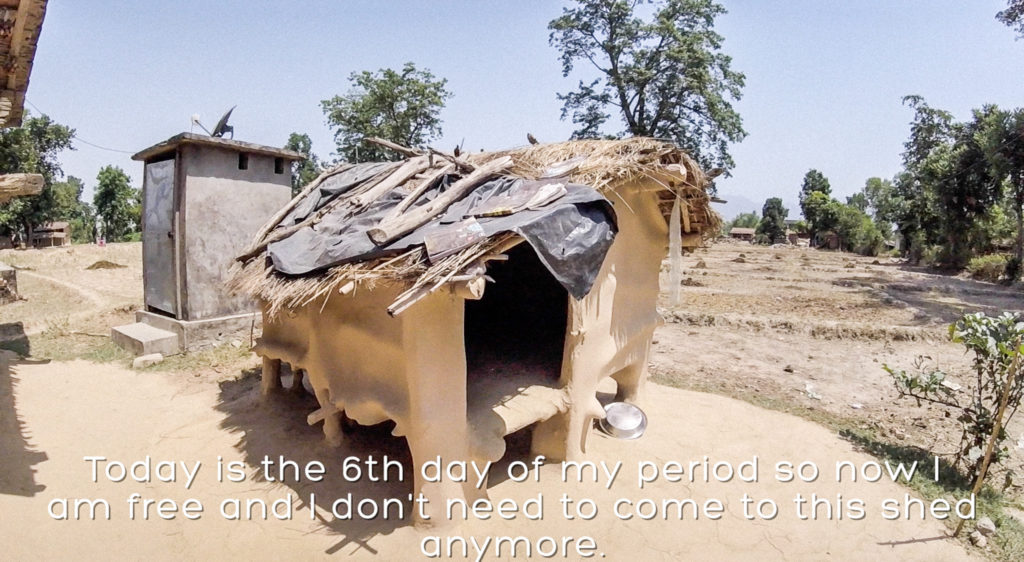
Though the other Hindu Dalit girl expressed a preference for sleeping closer to home or in a separate room inside her house, she explained that she does not suffer much, as there is a neighbor’s house nearby, so she can sleep peacefully.
The two high caste Brahman and Chhetri Hindu girls were allowed to sleep close to their houses, but not inside. In their films, they both showed how they slept on small benches on their porches.
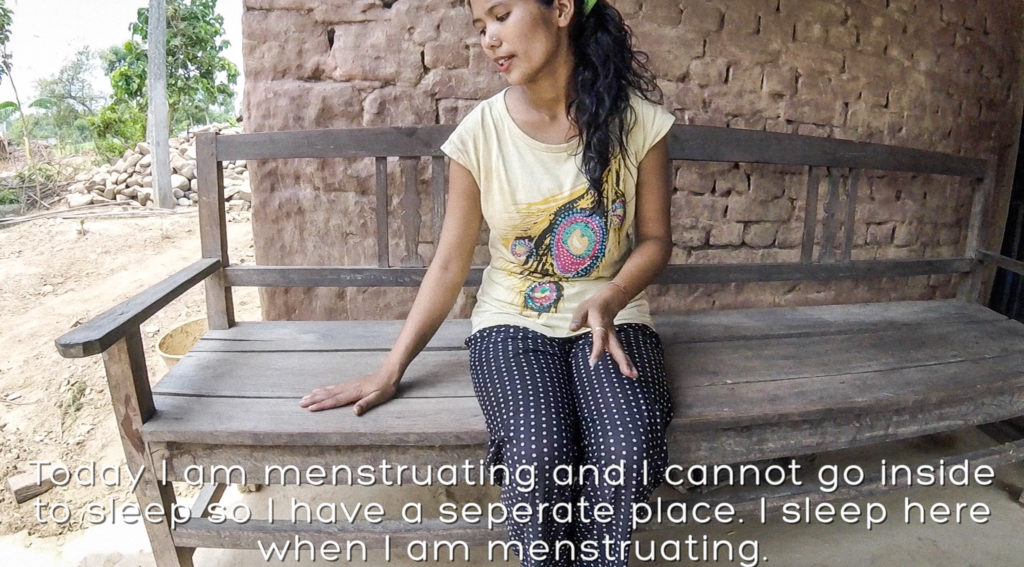
“I don’t feel good sleeping outside. There are many insects that bite. I feel scared that something will fall on me. Our grandparents have also told us stories of a ghost that walks down the road at midnight. We feel so scared but what can we do? We have to sleep [here]” (Srijana, Hindu Brahman, age 18).
Maintaining Physical Distance
Maintaining physical distance from a place or object was commonly displayed throughout the films, and related to keeping distance between themselves and their kitchens, toilets, water taps, prayer rooms, homes, and temples. Whereas all Hindu participants maintained distance to various degrees, the Christian participants did not follow such practices. For certain objects (e.g., water taps, toilets), only a minimum distance needed to be maintained, but for other places (e.g., temples, homes), a larger distance was required.
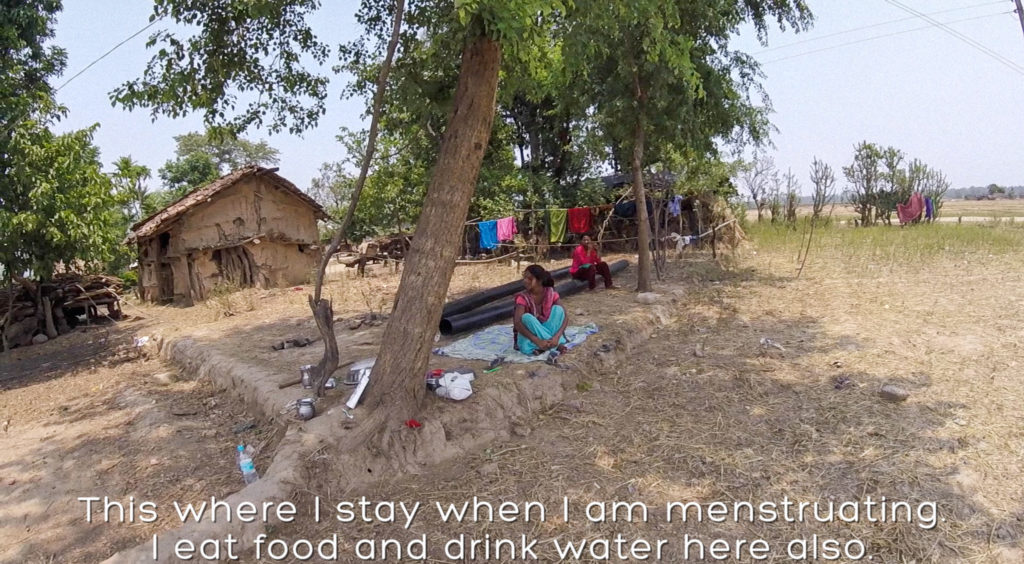
The most extreme example of maintaining physical distance was demonstrated in the films created by the two Hindu Dalit girls, who maintained a large distance between themselves and their homes during menstruation. They were not allowed to enter the courtyard of their homes, or use anything within the periphery of their homes, such as a toilet or water tap.
“During Tihar (festival of lights) everyone sits outside together and eats and enjoys the festival, but [while I am on my period] we must sit separately at a different home, and I feel bad. Because of my period they separate me. While everyone else is eating together in the home, I am sitting separately and eating alone. [During this time] my eyes fill with tears” (Kinjal, Hindu Dalit, age 16).
Another common practice was keeping distance from community places of worship. All Hindu girls maintained physical distance from temples while menstruating, which appeared to be at least 100 feet.
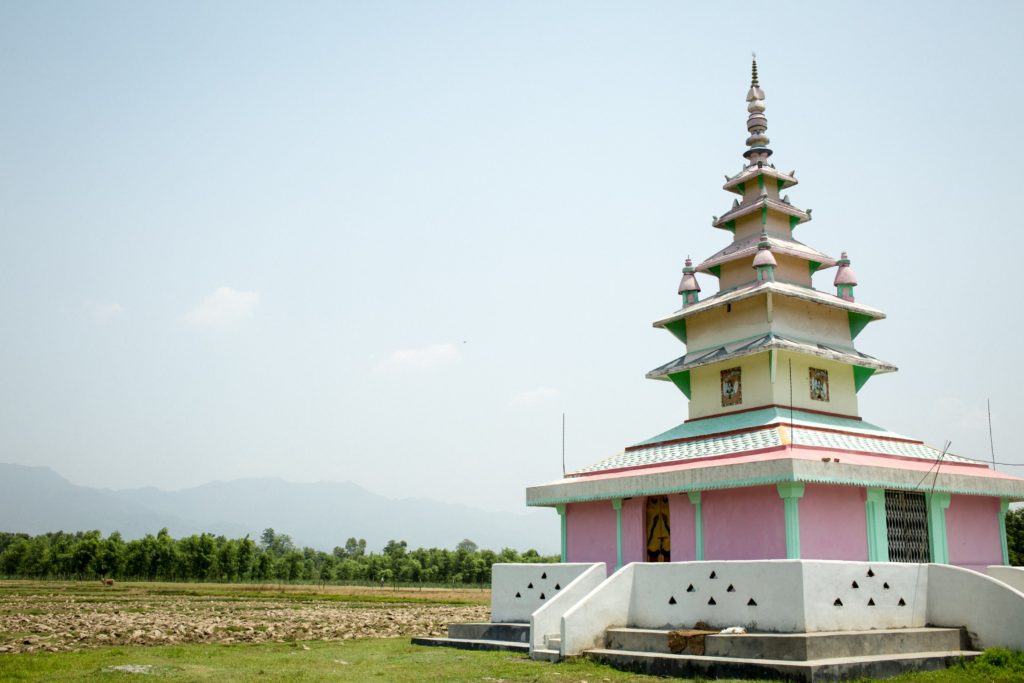
Two Hindu girls (Brahman, Dalit) discussed maintaining distance from toilets in their films. One expressed that using the same toilet as her elders was a problem because she is polluted during her period. She also explained the potential negative effects of following this restriction:
“I cannot go inside the toilet when I am menstruating. This has affected me because if we do not use the toilet then the environment will be polluted. If the environment is polluted, then we may suffer from different types of diseases that can spread if [we are defecating] everywhere” (Srijana, Hindu Brahman, age 18).
Full Participant Films
Each of the participants comes from a unique background. They all have unique menstrual experiences that they share in their own films using their own creative voices. Each of the participant films can be seen by clicking the links in the photos below. (They are ordered from least restrictive practices, to most restrictive practices).
Leave a comment
You must be logged in to post a comment.
